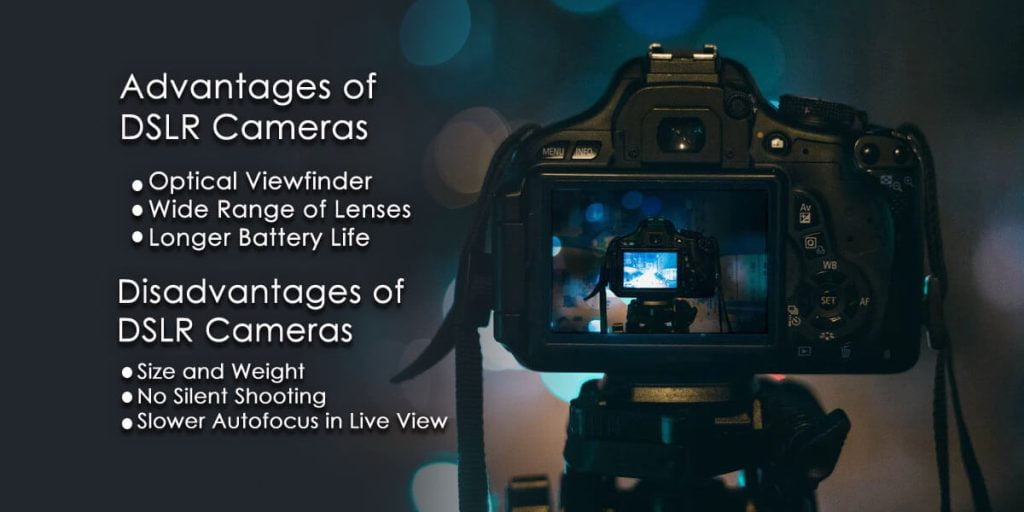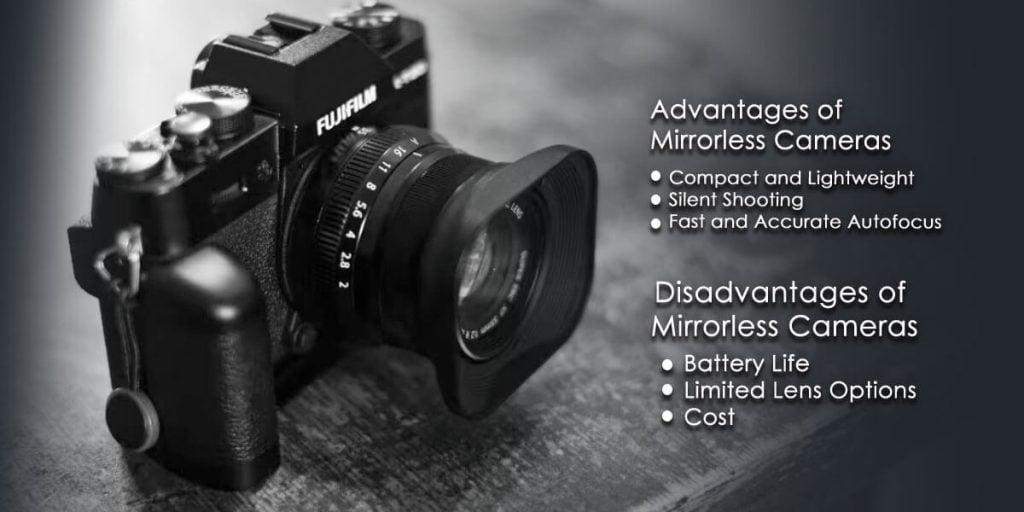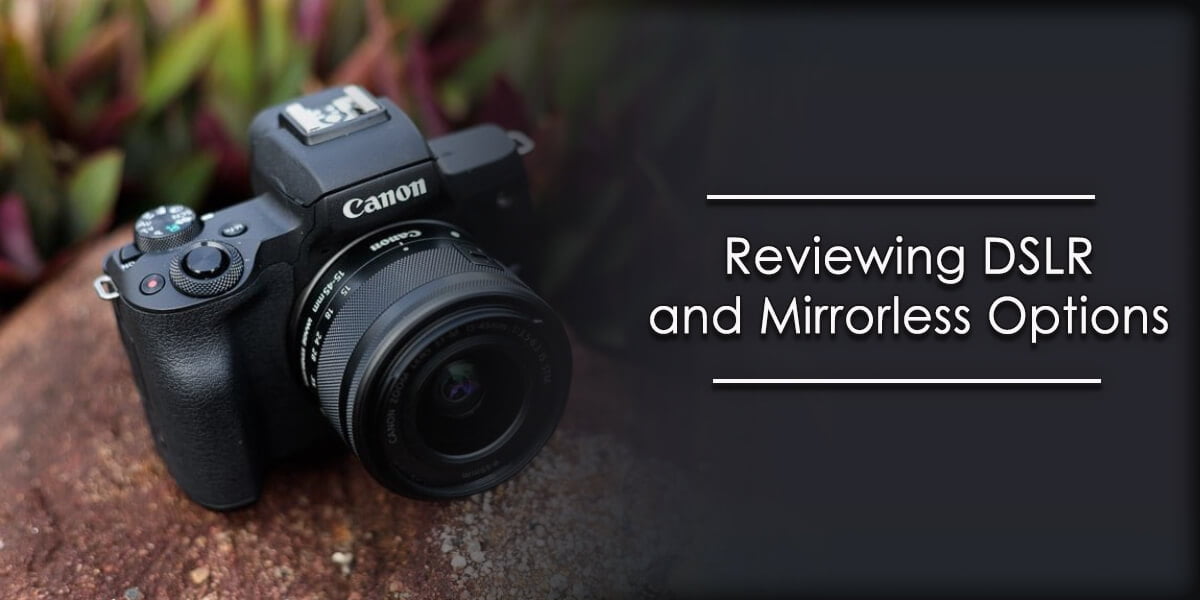Camera Comparison: Reviewing DSLR and Mirrorless Options
In today’s digital world, saving memories through photos matters a lot. Whether you’re a beginner or an expert, having the right camera can significantly improve your picture quality. Two popular options stand out for choosing a camera: DSLR (Digital Single-Lens Reflex) and mirrorless cameras. Let’s examine these two camera types, see their advantages and disadvantages, check out what they offer, and have a camera comparison. This will help you choose better.
Understanding DSLR Cameras
Let’s start by understanding what a DSLR camera is. DSLR cameras use a mirror mechanism to reflect light from the lens into an optical viewfinder. This mirror flips up when you take a photo, allowing light to hit the image sensor directly, capturing the image. DSLRs have been used for advantages for a while due to their quality.
Advantages of DSLR Cameras
Optical Viewfinder: One big plus of DSLRs is their optical viewfinder. It shows you the scene you’re about to capture, helping you take clear shots even in intense lighting or with fast-moving things.
Wide Range of Lenses: DSLRs have many different lenses to choose from. Some make things look big (like landscapes), while others zoom in far (suitable for animals). These lenses come from different makers so that photographers can choose the best.
Longer Battery Life: DSLR cameras generally have longer than mirrorless cameras. This is because they use an optical viewfinder, which requires less power consumption than an electronic viewfinder used in mirrorless cameras.

Disadvantages of DSLR Cameras
Size and Weight: DSLRs tend to be bulkier and heavier due to their mirror mechanism and larger body size. Carrying lots of lenses and extras with DSLRs can be sturdy and less easy to move around.
No Silent Shooting: The mirror mechanism in DSLRs makes them louder when capturing images. This can be a drawback when silence is essential, such as during a wedding ceremony or wildlife photography.
Slower Autofocus in Live View: When using the live view mode on a DSLR, the autofocus can be slower than mirrorless cameras. DSLRs rely on a separate autofocus sensor, which may not perform as efficiently in live view as the dedicated on-sensor autofocus systems found in mirrorless cameras.
Introducing Mirrorless Cameras
As the name suggests, Mirrorless cameras lack the mirror mechanism found in DSLRs. Instead, they use an electronic viewfinder or a rear LCD screen to preview the image before capture. Carrying lots of lenses and extras with DSLRs can be bulky and less easy to move around.
Advantages of Mirrorless Cameras
Compact and Lightweight: Mirrorless cameras are made to be smaller and lighter than DSLRs. This makes them highly portable and convenient for travel or street photography, where carrying heavy gear can be a burden.
Silent Shooting: Mirrorless cameras have an electronic shutter, which allows for silent shooting. This is good when you want to take pictures quietly without bothering anyone.
Fast and Accurate Autofocus: Mirrorless cameras use a quick and accurate autofocus on their sensor. This helps significantly for fast-moving scenes and when it’s not very bright and in low light conditions.

Disadvantages of Mirrorless Cameras
Battery Life: Due to the reliance on electronic viewfinders and LCD screens, mirrorless cameras consume more power, leading to a shorter battery life than DSLRs. But, newer mirrorless cameras have longer-lasting batteries due to better technology.
Limited Lens Options: Although mirrorless camera systems have expanded their lens lineup, they still have fewer lens options than DSLRs. But things are changing as more lens makers create lenses for mirrorless cameras.
Cost: Mirrorless cameras, especially high-end models, can be more expensive than DSLRs. This is partly due to the newer technology used in mirrorless cameras and the smaller market share compared to DSLRs. However, as mirrorless technology advances and becomes more popular, the price difference is expected to decrease.
Which Camera is Suitable for You?
Deciding on DSLR or mirrorless comes down to what you like and need. Here are some factors to consider:
Purpose: Determine the primary purpose of your camera. A DSLR might be better if you’re a professional photographer or require advanced features. But if you want a simple camera to carry and use, choose a mirrorless one.
Budget: Consider your budget. DSLRs generally offer more affordable entry-level options, while mirrorless cameras tend to have a higher price point. However, both types of cameras come in various price ranges to suit different budgets.
Lens Selection: Evaluate the lens selection available for each camera system. This may influence your decision if you have specific lenses in mind that are only available for DSLRs or mirrorless cameras.
Future-Ready: Consider the future direction of the camera industry. Mirrorless cameras are getting popular, and they’re improving fast. If you want a future-ready camera, mirrorless might be a better choice.
Wrap-Up
To wrap up, both DSLRs and mirrorless cameras have pros and cons. DSLRs are trusted and have many lenses, while mirrorless ones are smaller, focus better, and can shoot quietly. Just think about what you need, and you’ll find the right camera. The above camera comparison is based on valid data and will help you choose a good option which will suit your needs.





